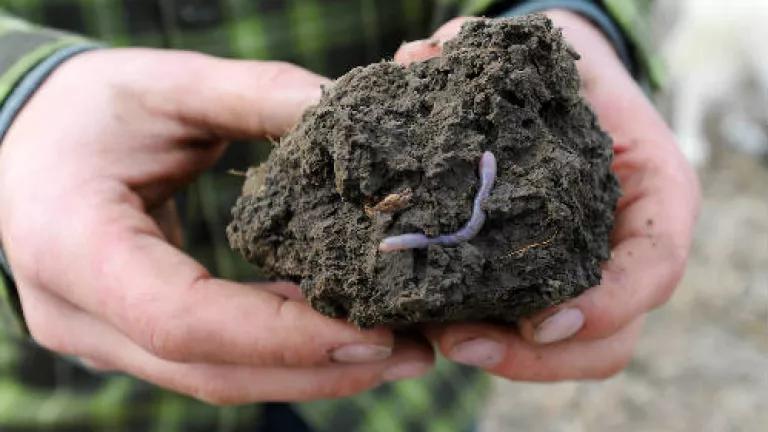
Yesterday, the Washington Post reported that the USDA has identified mcr-1, the notorious colistin resistance gene, in a second pig sample. Again, this gene is on a shareable piece of DNA, a plasmid, which can be transferred from one bacterium to another. The discovery in a second pig highlights that mcr-1 is circulating in the environment, possibly from multiple sources. It has already been detected in multiple countries. All of this has doctors and scientists, myself included, worried that this resistance gene will be picked up by an already hard-to-treat infection, rendering it untreatable by all antibiotics. If this happens, our medicine cabinet will at last be empty.
No one wants this scenario to happen. The White House last year made combating antibiotic resistant bacteria a top priority and assembled an Advisory Council of experts to provide guidance on how to address the antibiotic resistance crisis. Given the urgency to understand and propose solutions on how to stem the resistance crisis, I find the process around the colistin resistance discovery rather worrying. The USDA has been less than transparent about their findings; the methods used to find the mcr-1 gene also point to possible significant limitations of our current national antimicrobial resistance testing program, which is supposed to identify emerging antibiotic resistance threats in our food.
Lack of Transparency
Curiously, up until yesterday’s House Energy and Commerce committee hearing, very few details had been publicized about the bacteria from the pig samples, despite one being discovered by USDA scientists in March. At the hearing, it was CDC officials who shared more specific information; USDA did not attend. Nuances, such as whether antibiotic use other than colistin could lead to the spread of mcr-1 because mcr-1 is in a group with other resistance traits, not to mention the actual genetic sequences, were left out of the discussion. Yet these exact details were provided quickly in the case of the Pennsylvania patient that tested positive for a mcr-1/colistin resistant E. coli. Publishing the genetic sequence of the colistin resistance carrying plasmids from the two pig samples would help scientists understand how mcr-1 maybe moving around or how antibiotic use on livestock could be helping it spread. The disparity between information provided about the livestock source of mcr-1 and the human source is unfortunately consistent with the federal government’s continued reluctance to use every available means to assess and reign in the risks associated with antibiotic use in animal agriculture.
Enhanced Surveillance Used to Discover MCR-1
After reading the science behind the USDA discovery of mcr-1/colistin resistance, I’ve asked myself on many occasions, did this resistance gene really just emerge OR did we miss it in year after year of NARMS (National Antimicrobial Resistance Monitoring System) testing because agency methods are not sensitive enough to detect emerging patterns of resistance?
What’s especially interesting with the colistin case is that USDA took a new approach to look for the mcr-1/colistin resistance gene that differs from their typical NARMS methodology. I’ll use a box of chocolates analogy to explain this further.
Usually, USDA (and FDA) test samples like a piece of chicken or a pig intestine, which contain a lot of different bacteria or in this case, many different chocolates. If they want to test E. coli, they’ll pick one coated with white chocolate; a Salmonella, coated with milk chocolate. Once they’ve picked one, then they open it up and check for the “flavor” or resistance(s) it might have. “Caramel”? Tetracycline resistance. “Cherry creme?” Resistance to ampicillin…there are many flavors (resistances) among the chocolates (bacteria). Some chocolates (bacteria) might have more than one flavor inside—i.e. coconut and caramel, which means that they are multi-drug resistant.
The important thing to mention here is that when USDA typically conducts its testing, they pick one random chocolate from a (very big) box. So even though there might be hundreds or thousands of white chocolates (E. coli), they pick only one to represent all white chocolates in the box and check for the flavor (resistance). This means they don’t check any of the other chocolates with the same color in the bowl. With this methodology, it’s likely that you miss something. This is the strategy used by both USDA and FDA under the National Antimicrobial Resistance Monitoring System, which is our basis for understanding antibiotic resistance trends in the United States.
However, to hunt for colistin resistance, USDA took a different approach that increased the chances of finding something. Going back to the box of chocolates, let’s say colistin resistance isn’t a flavor; it’s actually a metal ball hidden in some of the chocolates and some of those metal balls are labeled “mcr-1”. Instead of just picking one white chocolate and checking for a metal center, USDA took a magnet to the box of chocolates and collected all the chocolates with a metal center. USDA scientists then went one-by-one and checked each white chocolate to see if the metal ball had a “mcr-1” label—the colistin resistance gene that everyone has been tracking.
This new approach means they are far less likely to miss something. Sure enough, USDA discovered two cases of mcr-1/colistin resistance from just 1300 samples. Using the typical NARMS method, not one sample from 44,000 Salmonella and 9000 E. coli or Shigella bacteria collected in recent years was found to have mcr-1/colistin resistance.
Which raises a crucial point: our current NARMS program—that helps guide policy on antibiotics use in livestock - may have a significant blind spot and therefore not provide enough information on what is really happening in our food supply.
The emerging mcr-1 story suggests that we are not collecting the data we need to gauge identify resistance risks and to track the progress of resistance over time. Nor is all relevant information being delivered to the public and to the scientific and medical communities in a timely manner. These factors should weigh heavily on the members of the CARB Advisory Council, who have been tasked with making recommendations on a data collection program for antibiotic use and antibiotic resistance associated with animal agriculture.
USDA, and FDA should act now to:
- Institute and carry out a plan to collect on farm antibiotic use as well as ensure that they are adequately monitoring for emerging antibiotic resistance threats.
- Measure the impact of phasing out growth promotion uses on overall sales of antibiotics for animal agriculture and moving most antibiotics under veterinary feed directive through sales data.
It’s imperative that both agencies collect the above information, which will allow them to assess if progress is being made in stemming the antibiotic resistance crisis. As we know from the colistin example, the microbes won’t wait for us to get it right.



